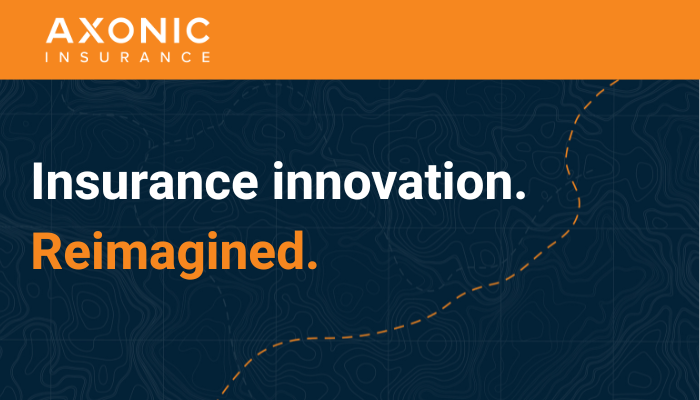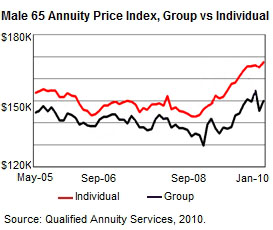The SEC might have a great conspiracy case against Goldman Sachs if it could come up with a plausible conspiracy. Its complaint alleges that Goldman Sachs defrauded the investors in its Abacus 2007-AC1 fund by allowing the CDO’s portfolio of securities to be selected by a hedge fund operator who stood to make an immense profit if the fund failed.
The hedge fund operator is John Paulson, who famously made a great fortune by betting that the housing bubble would burst. In early 2007, he wanted to make a billion dollar wager that subprime-backed mortgages would collapse. So he went to Goldman Sachs, which, like the other major financial houses, is in the business of creating such customized gambling products for clients.
For a $15 million fee from Paulson, Goldman Sachs created Abacus 2007-AC1, a synthetic collateralized debt obligation. It provided exposure to $2 billion worth of subprime (mostly BBB-rated) home mortgage-backed securities (MBS) through the device of selling contracts on them that paid off if the underlying mortgage-backed securities defaulted on their payments or suffered a write-down in value.
If the housing bubble did not burst, and the underlying securities (which Abacus did not own) did not default, Abacus would continue to collect handsome premiums on the contracts. If not, Abacus would lose heavily. So the vehicle provided a highly effective means of placing a bet, long or short, on the subprime sector.
Advertisement
Goldman found three participants to take the long side of the wager on subprimes—ACA Capital Holdings, a bond insurer, IKB Bank, a German-based specialist in mortgage securities, and itself. ACA went long by providing a $900 million credit default swap on Abacus itself (earning a $45 million premium from Paulson, via Goldman) and then investing $40 million of the premium in Abacus. ACA’s wholly owned subsidiary, ACA Management, had sole authority to make the final determinations of the 90 securities in the referenced portfolio, and would receive a management fee.
IKB Bank bought $150 million worth of Abacas’ notes (which, through the magic of structured finance, were rated higher than any of the 90 referenced MBS) in return for a variable rate of LIBOR + 85 basis points on part of the investment and LIBOR + 110 basis points on the rest. Goldman put up $90 million to complete the financing.
Paulson was the only short. He bought the credit default swap that ACA Capital had furnished. All four participants had the same data about the 90 underlying securities, and received the same Offering Circular or “flip book.”” (Unregulated securities do not require a registered prospectus.)
What separated the long and shorts in this billion-dollar bet was their opinion of the direction of the housing market. Paulson, as the lone short, held the view that a “subprime Residential Mortgage-Backed Security wipeout scenario” was possible. In this scenario, homeowners would not pay mortgages, the value of their houses would decline, and the subprime bonds backed by the mortgages would go bust.
Those on the long side continued to hold a more optimistic view. ACA, which had already insured over $21 billion worth of similar subprime-backed bonds, considered the “wipeout scenario” so unlikely that it gave 20:1 odds on the credit default swap it sold in the deal. Paulson proved right, however, and won the bet.
So where is the fraud? Goldman, to be sure, designed a gambling mechanism for clients, including Paulson, to go short or long the subprime sector. But that is no different from designing index funds that allow gamblers to go short or long stocks, bonds, and commodities.
The core of the SEC case is that Goldman withheld vital information from ACA and IKB by not disclosing the identity of the counterparty. ACA knew of course that someone was short the deal, since it sold Goldman Sachs a $900 million credit default swap precisely so someone could take the short side. While Goldman did not say that Paulson was that counterparty, his identity may not have been a mystery to ACA.
Paulson’s top lieutenant in the deal, Paolo Pellegrini, testified to the SEC in 2008 that he had informed ACA Management that the Paulson hedge fund was betting against the transaction. If so—and Pellegrini had no reason to perjure himself—ACA possessed the information that Goldman withheld, and went ahead with the deal.
The other participant, IKB bank, which bought Abacus’ AAA-rated notes, may or may not have been kept in the dark about Paulson, but Goldman stated in the offering material for the notes that it might not disclose information about other Goldman clients, and specifically warned, “this presentation may not contain all information that would be material to the evaluation of the merits and risks of purchasing the Notes.”
The issue here goes beyond non-disclosure of the identity of a counterparty. The SEC’s fraud theory contends that Paulson undermined Abacus by “heavily influenc[ing] the selection of the portfolio to suit its economic interests.” Yet ACA’s Management unit had the sole authority to select each and every bond referenced in the portfolio. It also was experienced in selecting subprime portfolios: it had managed 22 other such deals valued at $15.7 billion.
Paulson clearly made suggestions to ACA, but he wasn’t necessarily able to “heavily” influence ACA to choose bonds it would not have otherwise selec ted, as the SEC claims. Since ACA’s parent was risking over $900 million to insure the deal, why would it choose any but the least risky subprime bonds? It had reason to suspect Paulson’s neutrality because Pellegrini revealed to it, as he testified, that Paulson planned to short Abacus.
In any case, ACA picked the subprime securities to reference in the portfolio, and t hey failed. But 99% of all securities based on subprime loans were marked down by the rating agencies in 2008, so it is not clear that Abacus would have suffered a different fate had ACA picked 90 other subprime securities. In fact, ACA’s losses on Abacus were less than five percent of the $22 billion in losses it suffered in the subprime collapse.
By the time it came to pay off the wager, ACA, overwhelmed with losses from its other credit default swaps, couldn’t pay off the loss on Abacus. The Dutch bank ABN-AMRO, which had backstopped ACA’s debts, had to be taken over by the Royal Bank of Scotland. So the Royal Bank of Scotland wound up paying an $842 million loss on the credit default swap, which went to Paulson.
No one can fault the SEC’s objective of restoring badly shaken public faith in the casinos of Wall Street by ferreting out financial frauds. To this end, it chose to go after Goldman Sachs, a powerful bank that is identified in the public’s mind with rapacious profiteering.
Unfortunately, the SEC’s fraud case against Goldman does not add up. It implies a conspiracy without co-conspirators. If Goldman Sachs had designed its own fund to fail, why didn’t it go short the fund? It could have retained the credit default swap it got from ACA for its own account rather than selling it to Paulson. Instead, it went long by putting $90 million of its own money into Abacus. If it was in cahoots with Paulson, how did it get its share?
The SEC scrutinized Paulson’s records and found no evidence that he did anything with the proceeds other than distribute them to the investors in his funds (including himself). Goldman’s records showed it lost $75 million (after taking its $15 million fee into account).
Not only is there no motive or logic for Goldman to have sabotaged its own fund, the SEC complaint fails to cite a single witness or document to substantiate that theory. Nevertheless, SEC has brilliantly succeeded in implanting that idea in the media.
The New York Times, for example, citing the SEC as its source, reported in its front page on April 15 that “Goldman created and sold a mortgage investment that was secretly devised to failed.” On April 18th, its Nobel Prize-winning columnist Paul Krugman added, “the SEC is charging that Goldman created and marketed securities that were deliberately designed to fail, so that an important client could make money off that failure. That’s what I would call looting.” And a Google search reveals over 600 other similar stories in other newspapers.
The message: If Wall Street deliberately betrays investors in this manner, the government must extend its oversight to every nook and cranny of the financial universe. So however the SEC legal case is settled, the SEC has already won in the court of public opinion.
Edward Jay Epstein is the author of The Big Picture: Money and Power in Hollywood (Random House, 2006) and its sequel, The Hollywood Columnist: The Hidden Financial Reality Behind the Movies (Melville House, 2010).
© 2010 RIJ Publishing. All rights reserved.






 Pfeifer defined “reasonable profitability” as about 10% a year. “If you think you can manage to 20% returns, you’ll be disappointed,” he said at LIMRA’s conference. An estimated 350 insurance professionals attended the conference.
Pfeifer defined “reasonable profitability” as about 10% a year. “If you think you can manage to 20% returns, you’ll be disappointed,” he said at LIMRA’s conference. An estimated 350 insurance professionals attended the conference.